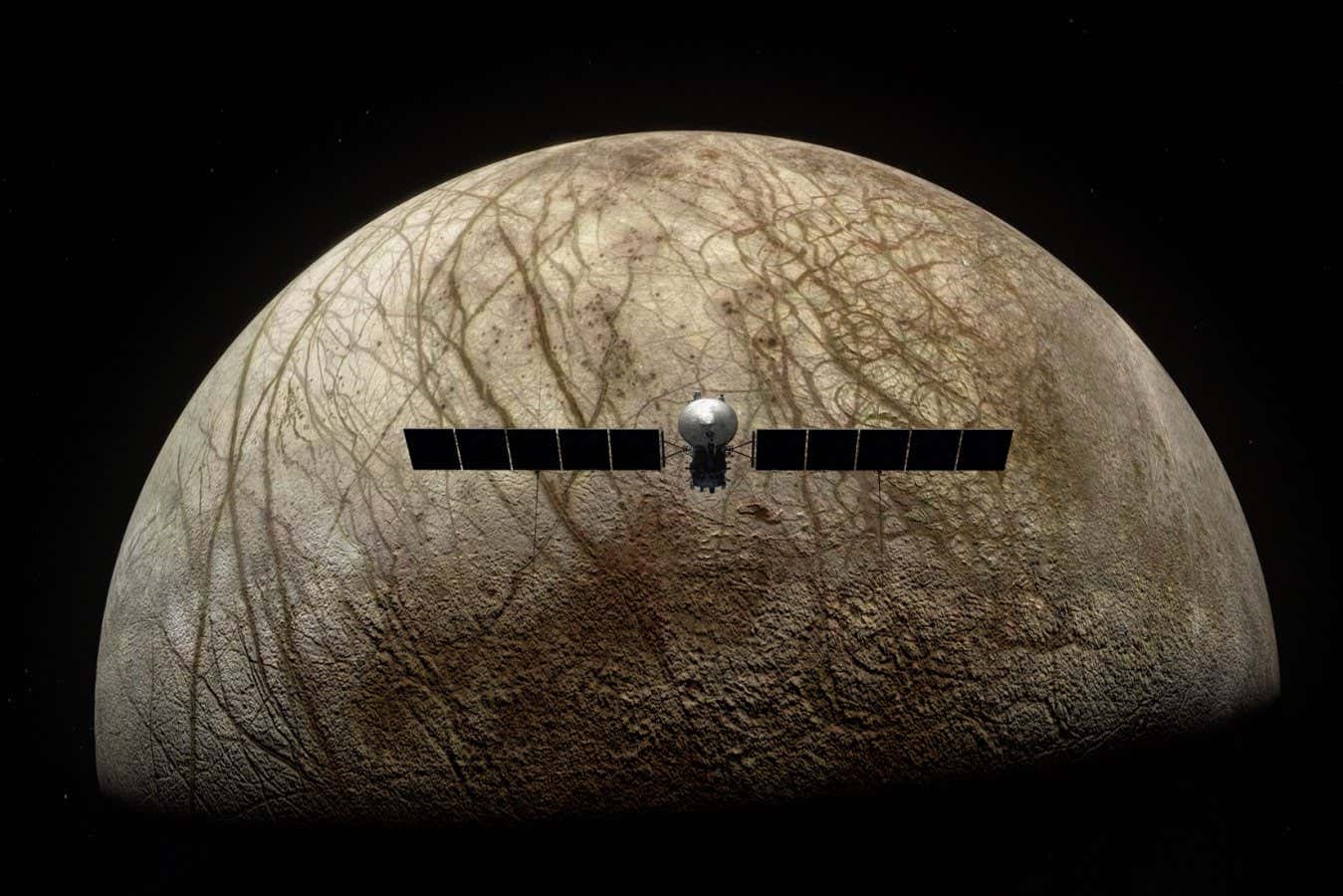A Visual Representation of Europa Clipper in Proximity to the Moon It is Named After by NASA
An illustration depicting Europa Clipper, a spacecraft developed by NASA, in close proximity to the moon it is named after showcases the scientific endeavor set to embark later this year. This mission holds the potential to revolutionize our understanding of the icy moon’s composition, particularly in the quest for signs of life beyond Earth.
Europa has captivated the scientific community due to the hypothesis suggesting the existence of a vast saltwater ocean beneath its icy exterior. Encased in a thick shell of ice, this moon of Jupiter is enveloped by a veil of ice grains and dust, believed to be remnants of celestial bombardments over time.
Scheduled for launch in October with an anticipated arrival at its destination in 2030, NASA’s spacecraft will conduct a flyby mission around Europa without the intent of landing on its surface. Equipped with a suite of 10 experiments, the primary objective is to delve into Europa’s internal structure, deciphering the chemistry of its ocean and evaluating its potential habitability for extraterrestrial life forms.
Among the array of instruments onboard is the SUrface Dust Analyser (SUDA), a sophisticated mass spectrometer designed to capture and analyze materials ejected from the moon’s surface. This analysis aims to unveil crucial details about Europa’s chemical composition, potentially shedding light on the presence of organic molecules and salts.
While the primary focus of SUDA is not the direct detection of existing life forms on Europa, recent research conducted at the Free University of Berlin, Germany, suggests a groundbreaking possibility. Scientists have demonstrated that SUDA could potentially detect fragments of cellular material, offering a tantalizing glimpse into the presence of life on this enigmatic moon.
The high-speed impact of ice grains on SUDA during the spacecraft’s trajectory poses a unique challenge, yet the team’s innovative approach involving laser-aided simulations has yielded promising results. By disintegrating water droplets containing samples of Sphingopyxis alaskensis, a resilient bacterium adapted to extreme cold environments, the researchers successfully identified key components such as fatty acids and amino acids, indicative of cellular material.
The ability to differentiate cellular material from a myriad of organic molecules and salts within the ice grains remains a critical aspect of this research. The composition of the ejected material will play a pivotal role in determining the clarity of the findings, influencing the mission’s potential to unequivocally detect signs of life on Europa.
Although Europa Clipper’s primary objective is not centered on life detection, the implications of this research could potentially redefine the mission’s scientific goals. As the spacecraft ventures into the uncharted territory of Europa’s mysteries, the quest to unveil the secrets of its hidden ocean and the possibility of life beyond our planet stands at the forefront of this pioneering exploration.
